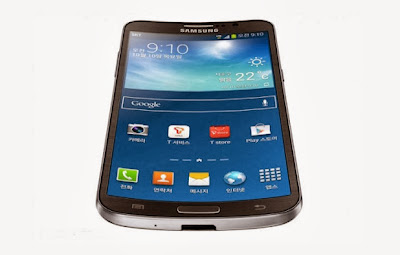Motorola comes up with this phone into a new lineup, with active touchless control display and Kevlar fibre body. The phone seems not so slim like Galaxy or HTC or Xperia's champion shaped bodies. A little thick with weighty hardware inside.
The Display of this phone is quite good with same exact big screens of HTC and Galaxy. It has 5 inch display with HD OLED screen with 720p resolution (1,280x720 pixels) but it doesn't pack the same pixel density as the HTC One (4.7-inch, 1080p LCD) or Samsung Galaxy S4 (5-inch, 1080p OLED), its primary competition. That said, the Maxx's high-contrast display has lusciously saturated colors and impressively dark black levels.
For internal electronics, Motorola has made a very unconventional move with its 2013 smartphone lineup. Instead of engaging in the brutal processor arms race like practically every other handset maker, the company decided to sidestep the issue completely. All the new Droids, including the Droid Maxx, are powered by a proprietary processing solution Motorola calls the X8 Mobile Computing System.The inside X8 is a dual-core 1.7GHz Qualcomm Snapdragon S4 Pro CPU. Designed to be efficient rather than blazingly fast, the X8's main dual-core application CPU is backed by muscular quad-core Adreno graphics, plus two additional "cores": a natural language processor and one for contextual computing.Helping this hardware is a healthy 2GB allotment of RAM. Also, unlike the Droid Ultra, which has only 16GB of internal memory, the Droid Maxx comes with 32GB to play with. That said, there's no SD card slot for increasing storage.
Another result of Motorola and Google's union is Active Display, a useful feature that all the new Droid phones have. Also integrated into the Moto X, Active Display serves in place of a separate physical notification light. Essentially, the Droid Maxx's screen will flash softly with alerts for incoming e-mail, text messages, and calls. Touching and holding finger on the associated icon in the center of the screen causes the device to display additional information. Pulling the icon upward to the top of the screen wakes up the phone and opens the linked application.
The Droid Maxx also makes use of the X8 computing platform, like the Droid Ultra and Moto X, to perform voice control tricks. Motorola calls the capability Touchless Control, and as its name implies, speaking a magic phrase will cause the Maxx to drop what it's doing and await users vocal commands.
The last and most attractive feature about the battery life of this phone. Having a high-capacity 3,500mAh battery, the main selling point for the Motorola Droid Maxx is its promised longevity.The phone was able to push through test of video playing benchmark for 15 hours and 50 minutes. While far from the 48 hours of "mixed" use Motorola claims the Maxx is capable of, this showing is well ahead of the Droid Razr Maxx HD (14 hours, 53 minutes) and substantially longer than both the HTC One (9 hours, 37 minutes) and Samsung Galaxy S4 (10 hours, 30 minutes: average).
Indeed, this latest device consistently demonstrated the same ludicrously long run time, well over 14.5 hours playing HD video. It also charged swiftly, reaching full power from zero charge in under an hour. Another nice extra is the Droid Maxx's (and all the new Droids for that matter) support for wireless charging via the Qi standard.
Photo and Information Courtesy: Cnet





